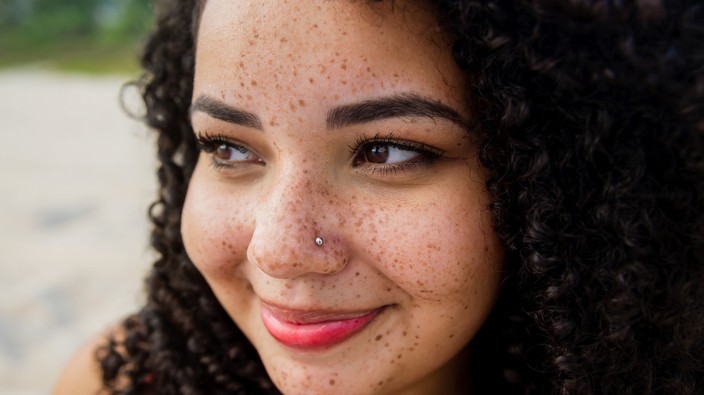as a man of english and irish descent, i am what some might call “pasty white”. my mum, having suffered many different skin-related problems throughout her life, knew she had to educate her alabaster offspring on the health risks associated with sun exposure, and skin that has a propensity to develop an array of spots and bumps.as such, i am well acquainted with the sunscreen section of the drugstore and have more than a few times wondered, looking at my skin, “freckle, mole or something else?” fortunately, there are a few distinctions that can help you identify these similar-looking spots — information that can help you avoid serious health issues in the future.
freckles, also known as ephelides, are small clusters of pigment within the skin. they are almost always harmless and not a sign of any underlying health conditions. freckles are usually spread across the middle of the face, are less than five millimetres in diameter and are more common in younger people as they tend to fade as we age. they can also develop due to genetics and through exposure to the sun and ultraviolet light.according to the
cleveland clinic, people with lighter or fair skin are more likely to develop freckles as the scarce melanin in paler skin is more concentrated to some skin cells (the freckles) than others. so instead of getting an even tan, the sun causes the freckles to darken while much of the other skin stays pale — or burns. freckles can be tan, light brown, red, dark brown or black, but they are always darker than the person’s skin colour.while moles are similar to freckles, there are some distinctions. moles are often a bit larger and darker than freckles and can appear anywhere on your body, while freckles tend to appear only on the face. and while freckles are always flush with your skin, moles are often raised and can change shape, colour, texture and size. it is important to monitor the moles on your body as any change in these characteristics can signal a deeper issue. while most moles are harmless, they can develop into melanoma — the most serious type of skin cancer.
according to the
skin cancer foundation, melanomas can appear anywhere on the body — even places where the sun doesn’t shine — but are most common on women’s legs and men’s torsos. the foundation recommends using the ‘ugly duckling’ method to detect when a mole my have developed into a melanoma: “this recognition strategy is based on the concept that most normal moles on your body resemble one another, while melanomas stand out like ugly ducklings in comparison,” the organization’s website reads. “these ugly duckling lesions or outlier lesions can be larger, smaller, lighter or darker, compared to surrounding moles.”it’s also important o know that moles are not exclusive to people with pale skin — anyone can have moles that develop into melanoma. the
mayo clinic recommends monthly checks for moles in every area of your body.and then there are sun spots. in addition to my face, i have many spots on my forearms and shoulders that look like freckles, but they are actually sun spots — also called age spots or liver spots.
sun spots are typically a bit larger than freckles and can be found on the hands, feet, shoulders, arms, back and face. sun spots form under similar circumstances to freckles (exposure to sunlight develops melanin in the cells) except sun spots tend to form as we age, as opposed to freckles which fade away as we get older. they also sometimes disappear if you avoid the sun, and they can be removed for aesthetic purposes through laser therapy, chemical peels and other topical treatments. and like freckles, sun spots are mostly harmless, but they should be monitored over time for changes in colour, shape or size.regardless of your skin colour or how freckled you are, it is always important to use sunscreen year-round to help prevent skin cancer and exposure to ultraviolet radiation. avoiding tanning beds and peak sun times can also help. if you notice any changes to the size, shape, border, colour or texture of any spots on your body, consult a dermatologist or doctor.
nick beare is a writer withhealthing.ca.
 3 minute read
3 minute read







